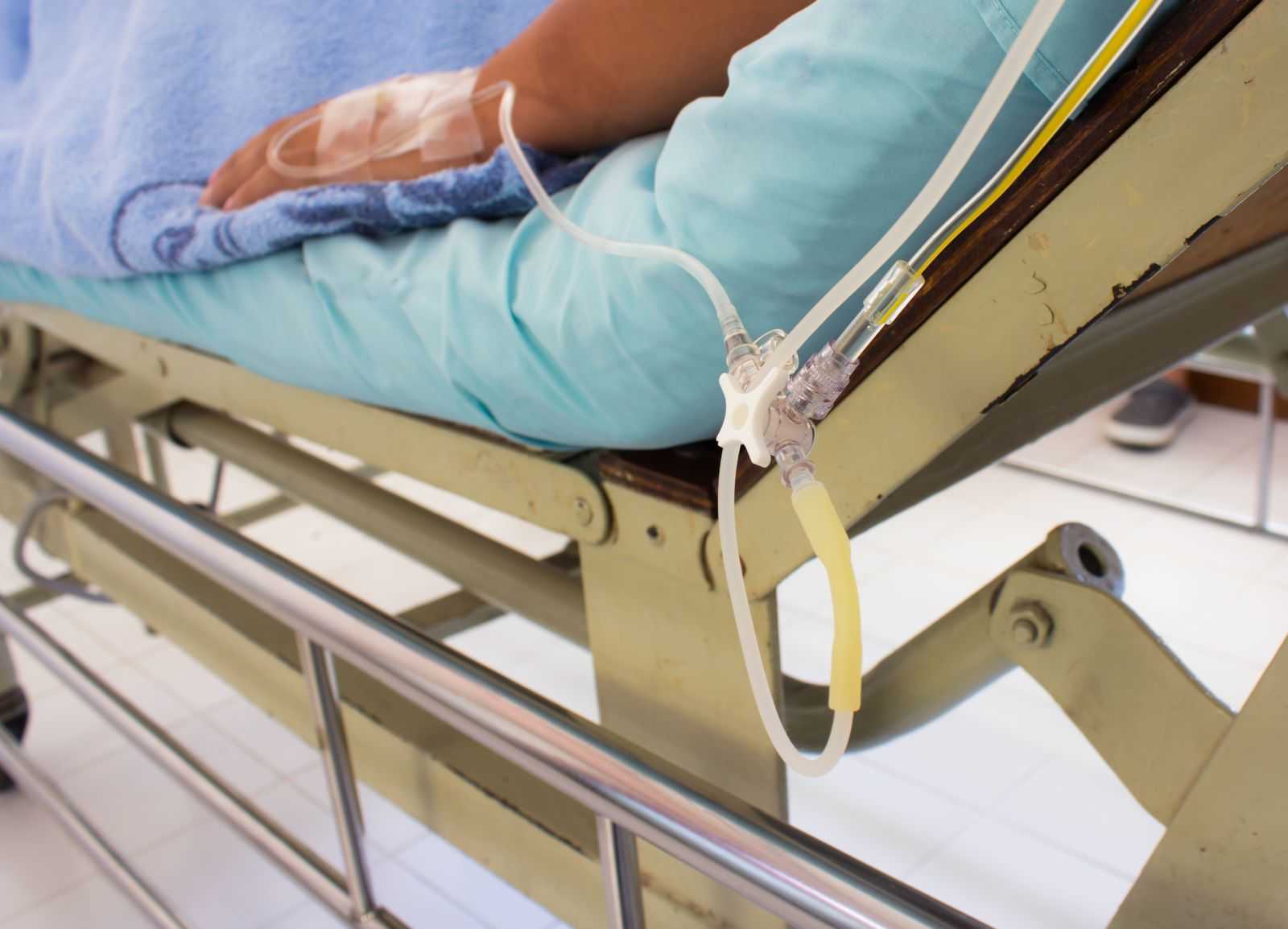PREDICTING FLUID RESPONSIVENESS

DOES RESPIRATORY VARIATION IN INFERIOR VENA CAVA DIAMETER PREDICT FLUID RESPONSIVENESS: A SYSTEMATIC REVIEW AND META-ANALYSIS
EJRC REVIEW
Circulatory failure or shock is characterised by haemodynamic alterations that result in impaired tissue perfusion with a high risk of death, around to 30% to 40% for adults and 5% to 17% for children with septic shock (2). Fluid resuscitation is the universal initial therapy in these patients, with the aim to increase stroke volume (SV) and improve vital organ perfusion and oxygen delivery (3). However, only about 50% of patients hospitalised for acute circulatory failure, are considered fluid responsive, with an increase in stroke volume of >10% following a fluid challenge (4) or Passive Leg Raising (5).
The aim of this study (1) was to systematically review the test characteristics of respiratory variation in inferior vena cava (IVC) diameter as a predictor of fluid responsiveness (FR) in patients with acute circulatory failure. Respiratory variation in inferior vena cava (IVC) diameter has been reported as a noninvasive, easily obtained measure with a low frequency (2–5 MHz) curved array transducer and a subxiphoid 2D view, 1 cm caudal to the confluence of the haepatic veins. IVC diameter has been studied in spontaneously ventilating patients, using the decrease in diameter during inspiration (termed collapsibility index (CI), positive test >40%–50%), and also in mechanically ventilated patients, using the increase in diameter during positive pressure ventilation (termed distensibility index (DI), positive test >12%–18%) (6.7).
Seventeen prospective observational studies involving 533 patients were included, three included only children <18 years of age, and the remaining included adults only. Eleven studies included mechanically ventilated patients only, five included non-ventilated patients only, and in one study the ventilatory status was unclear. Quality assessment was performed using the Quality Assessment of Diagnostic Accuracy Studies-2 (QUADAS-2) domains. 253 patients (47%) were fluid responders in term of SV changes measured by trans-pulmonary thermodilution, pulse contour analysis or bioreactance, but the reference standard tests were most commonly SV/SVi or cardiac output/cardiac index measured using transthoracic echocardiography. The mean threshold value for a positive IVC DI was 16% and for CI was 42%. The overall pooled sensitivity and specificity of respiratory variation in IVC diameter for predicting fluid responsiveness were 0.63 (95% CI 0.56–0.69) and 0.73 (95% CI 0.67–0.78), respectively. This systematic review found that overall, respiratory variation in IVC diameter performs moderately well in predicting FR, with a pooled area under the receiver operating characteristic curve of 0.79 (SE 0.05). A positive IVC ultrasound is moderately predictive of FR, with a pooled specificity of 0.73 (95% CI: 0.67–0.78), but not for negative IVC with a pooled sensitivity of 0.63 (0.56–0.69). There are many limitations of this review, some of which are directly linked to the measurement methods of the IVC diameter in individual studies, including inter/intra-observer variability. When reported, the latter were 1.5% to 8% and 6.2% to 9%, respectively (8, 9, 10, 11, 12). Furthermore this systematic review included a wide range of study participants, study settings, reference tests, and reporting methods for validating the index test, consequently the large degree of heterogeneity limited the ability of included studies to be compared and precluding sensitivity analysis.
Take Home Messages
- From a practical standpoint, respiratory variation in IVC diameter is moderately predictive of fluid responsiveness and is more limited in spontaneously ventilating patients. This finding emphasises that clinical context needs to taken into account when using IVC ultrasound to help make treatment decisions.
- In future studies, standardising the location, method, and threshold values for a positive test would make comparison between studies easier.
Article review was prepared and submitted by NEXT EJRC member Temistocle Taccheri, Department of Anaesthesiology and Intensive Care Medicine, University of Sacred Heart A. Gemelli School of Medicine, Rome.
References
- Long E1, Oakley E, Duke T, Babl FE: Does Respiratory Variation in Inferior Vena Cava Diameter Predict Fluid Responsiveness: A Systematic Review and Meta-Analysis. Shock 2017 May;47(5):550-559. doi: 10.1097/SHK.0000000000000801.
- Gaieski DF, Edwards JM, Kallan MJ, Carr BG: Benchmarking the incidence and mortality of severe sepsis in the United States. Crit Care Med 5(41):1167–1174, 2013;
- Russell JA: Management of sepsis. N Engl J Med 16(355):1699–1713, 2006;
- Marik PE: Fluid responsiveness and the six guiding principles of fluid resuscitation. Crit Care Med 44(10):1920–1922, 2016;
- Monnet X, Marik P, Teboul JL: Passive leg raising for predicting fluid responsiveness: a systematic review and meta-analysis. Intensive Care Med epub 42:1935–1947, 2016 ;
- Charron C, Caille V, Jardin F, Vieillard-Baron A: Echocardiographic measurement of fluid responsiveness. Curr Opin Crit Care 3(12):249–254, 2006;
- Vegas A, Denault A, Royse C: A bedside clinical and ultrasound-based approach to haemodynamic instability—Part II: bedside ultrasound in haemodynamic shock: continuing professional development. Can J Anaesth 11(61): 1008–1027, 2014;
- Choi DY, Kwak HJ, Park HY, Kim YB, Choi CH, Lee JY: Respiratory variation in aortic blood flow velocity as a predictor of fluid responsiveness in children after repair of ventricular septal defect. Pediatr Cardiol 8(31):1166–1170, 2010;
- Brun C, Zieleskiewicz L,Textoris J, Muller L, Bellefleur JP,Antonini F,Tourret M, Ortega D, Vellin A, Lefrant JY, et al.: Prediction of fluid responsiveness in severe preeclamptic patients with oliguria. Intensive Care Med 4(39):593–600, 2013;
- Charbonneau H, Riu B, Faron M, Mari A, Kurrek MM, Ruiz J, Geeraerts T, Fourcade O, Genestal M, Silva S: Predicting preload responsiveness using simultaneous recordings of inferior and superior vena cavae diameters. Crit Care 5(18):473, 2014;
- Feissel M, Michard F, Faller JP, Teboul JL: The respiratory variation in inferior vena cava diameter as a guide to fluid therapy. Intensive Care Medv 9(30):1834–1837, 2004 ;
- Muller L, Bobbia X, Toumi M, Louart G, Molinari N, Ragonnet B, Quintard H, Leone M, Zoric L, Lefrant JY: Respiratory variations of inferior vena cava diameter to predict fluid responsiveness in spontaneously breathing patients with acute circulatory failure: need for a cautious use. Crit Care 5(16):188, 2012.